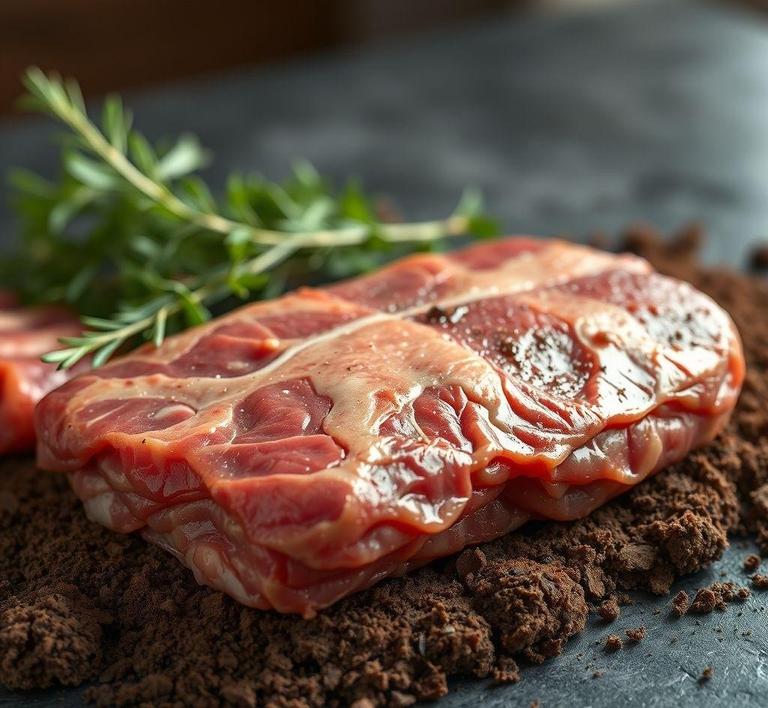If you’ve ever found yourself in the situation where you’ve thawed more ground meat than you actually need, you might be wondering whether it’s safe to refreeze it. While it’s generally okay to refreeze ground meat, there are some important guidelines to follow to ensure it stays safe to eat. Proper handling and timely freezing can make all the difference in keeping the meat fresh and avoiding any health risks. In this guide, we’ll walk you through the steps and considerations for safely refreezing ground meat, from how long it can be stored to the best practices for thawing and reheating. So, whether you’re dealing with beef, pork, or turkey, you’ll have all the info you need to avoid waste and keep your meals delicious!
Can You Refreeze Ground Meat?

When it comes to handling meat, especially ground meat, the question of whether you can refreeze it often comes up, and understandably so. Ground meat-whether beef, turkey, chicken, or pork-is versatile, but it’s also more prone to spoilage compared to larger cuts. So, can you refreeze it? The short answer is yes, but there are conditions that must be met for it to be done safely.
Ground meat can be refrozen, but it’s important to consider how it has been handled prior to freezing, whether it’s been thawed properly, and how long it has been stored. If ground meat is thawed in the refrigerator, it can generally be refrozen safely without significant risk of foodborne illness. The key factor here is that it must not have been left out at room temperature for an extended period. Refreezing meat that has been exposed to temperatures above 40°F (4°C) for more than two hours is dangerous and can lead to the growth of harmful bacteria like Salmonella or E. coli.
Another important point is how you thawed the meat in the first place. If you thawed the meat in the microwave or using hot water, it’s best to cook it immediately, as this process partially cooks the meat, making it more susceptible to bacterial growth. Refreezing this type of meat could put you at risk of foodborne illnesses.
How To Refreeze Ground Meat?
Refreezing ground meat requires a careful process to maintain safety and quality. Here’s how to do it step by step:
- Thawing Properly: The first step is ensuring the meat is thawed correctly in the first place. The best method is to place frozen ground meat in the refrigerator to thaw slowly. This ensures that it stays at a safe temperature (below 40°F). If you’ve already thawed the meat in the fridge, it’s safe to refreeze it, but keep in mind that this should be done within 1-2 days.
- Cook Before Refreezing: For added safety, consider cooking the ground meat before refreezing it. Cooking the meat before freezing ensures that any bacteria present are killed during the cooking process. Once the meat is fully cooked, let it cool to room temperature (but not for more than 2 hours) before packaging it for refreezing.
- Packaging: When you’re ready to refreeze, ensure the ground meat is properly packaged. Use air-tight packaging like freezer bags or vacuum-seal bags. If you’re using regular freezer bags, try to squeeze out as much air as possible to prevent freezer burn. You can also wrap it in heavy-duty aluminum foil and then place it inside a freezer bag for extra protection. Proper packaging is crucial to avoid freezer burn, which can impact the taste and texture.
- Label and Date: Make sure to label the packaging with the date it was refrozen. Ground meat should ideally be consumed within 1-3 months for optimal quality. Keeping track of when the meat was refrozen ensures you can use it within a safe window.
- Freezing Temperature: Your freezer should maintain a consistent temperature of 0°F (-18°C). If the temperature fluctuates, it can compromise the safety and quality of the meat.
Quality Impact
Refreezing ground meat can impact its quality, both in terms of texture and flavor. Each time meat is frozen and thawed, the ice crystals that form can break down the meat’s muscle fibers, which may lead to a slightly mushier texture after cooking. This is particularly noticeable with ground meat, which has a higher surface area than whole cuts.
Additionally, refreezing can impact the flavor, especially if the meat wasn’t properly stored before it was first frozen or if it was left in the freezer for a prolonged period. While the taste may not be dramatically affected, some people may notice a slight change. The more times meat is frozen and thawed, the more these effects become apparent.
A significant factor in the quality of refrozen ground meat is how it was initially frozen and thawed. If meat is frozen quickly, the smaller ice crystals formed in the process are less likely to damage the tissue structure, maintaining a better texture. However, slow freezing can cause larger crystals to form, leading to greater cellular damage. As a result, the texture after cooking may be less desirable.
If you’re refreezing cooked ground meat, the impact on quality is often less severe. The meat’s structure has already been altered during cooking, so freezing it again doesn’t lead to the same level of texture degradation. Still, you may notice some loss of juiciness or flavor, especially if the meat is not properly stored.
Refreezing ground meat is indeed possible, but it must be done with caution. As long as the meat has been thawed safely in the refrigerator and hasn’t been left out at room temperature for too long, it can be refrozen without significant safety concerns. However, quality might be impacted after multiple cycles of freezing and thawing. To preserve the best possible quality, it’s recommended to refreeze ground meat only once and to do so quickly after it’s been thawed. Also, always ensure that it is properly packaged to avoid freezer burn and maintain the meat’s flavor and texture.
Is It Safe To Refreeze Ground Meat?
Refreezing ground meat is a topic that often stirs up confusion and concern, but the answer isn’t as simple as a "yes" or "no." The safety of refreezing ground meat primarily depends on how it was handled before being frozen in the first place and how it was thawed. If ground meat was thawed properly-either in the refrigerator or using a quick thawing method like cold water or microwave-it is generally safe to refreeze it, but certain precautions should be observed.
When you freeze ground meat, its structure changes. The freezing process causes water within the meat to form ice crystals, which can rupture the cell walls. When the meat is thawed and refrozen, the process repeats, degrading its texture and quality. While the safety of the meat largely depends on the conditions it’s been stored under, it’s important to remember that each freeze-thaw cycle opens up the possibility of bacterial growth, especially if the meat spends too much time at unsafe temperatures (above 40°F or 4°C).
In summary, refreezing ground meat is possible, but it’s safer and best to limit how often it happens. The key is ensuring that the meat has been handled properly throughout the entire process-frozen, thawed, and refrozen. If there’s any doubt about whether it was handled correctly, it’s best to avoid refreezing.
Signs That Ground Meat Should Not Be Refrozen
When considering whether ground meat should be refrozen, a few visual, textual, and odor-based signs can indicate that the meat has been compromised and should not be refrozen. These signs are related to both the quality and safety of the meat.
- Color Changes: Fresh ground meat is usually a vibrant red or pink color, but once it’s thawed, it may start to discolor. While some color changes can occur naturally due to exposure to air, a greyish or brownish hue can be a sign of spoilage or improper storage. If the meat appears significantly discolored and has a dull look, it may be best to discard it, as this could indicate bacterial growth or oxidation.
- Unpleasant Odor: One of the clearest indicators that ground meat should not be refrozen is a sour, rancid, or overly ‘meaty’ smell. Fresh meat should have a clean, neutral odor. If the smell is off-putting or pungent, this could signal bacterial contamination. As bacteria multiply, they produce off odors, and refreezing meat with this type of odor can be risky for health.
- Slimy or Sticky Texture: If the ground meat feels slimy or sticky to the touch, this could be a sign of bacterial activity. The slime is the result of bacteria breaking down the proteins in the meat, and this often occurs after it’s been left in the temperature danger zone (40-140°F or 4-60°C) for too long. Refreezing this meat would not be safe and could lead to foodborne illnesses.
- Extended Thawing Time: If ground meat has been left out at room temperature for more than two hours or has been thawed in unsafe conditions (like on the counter), it’s no longer safe to refreeze. In these cases, bacteria have had the chance to multiply, increasing the risk of foodborne illnesses if consumed after refreezing.
Common Refreezing Mistakes
There are several common mistakes people make when refreezing ground meat that can result in both safety and quality issues. These mistakes often involve improper handling, storage, and thawing techniques.
- Thawing at Room Temperature: One of the biggest mistakes is thawing ground meat at room temperature. This can lead to the meat spending too much time in the danger zone for bacterial growth. If ground meat has been left out at room temperature for over two hours, it’s no longer safe to refreeze, regardless of whether it has been cooked or not.
- Refreezing After Cooking: While it’s generally safe to refreeze cooked ground meat, people sometimes make the mistake of refreezing it without cooling it down properly. Refreezing meat that hasn’t been cooled within two hours of cooking can promote bacterial growth, which might lead to foodborne illnesses. Ensure cooked meat is cooled to at least 40°F (4°C) before refreezing.
- Excessive Refreezing: As previously mentioned, each time meat is frozen, thawed, and refrozen, its texture and flavor degrade. Some people make the mistake of repeatedly refreezing meat, thinking that it’s still good to go. Each refreeze damages the meat’s cellular structure, and with each cycle, the risk of bacterial contamination increases.
- Storing Meat in Improper Containers: When refreezing ground meat, using the right container is crucial. Many people make the mistake of simply placing meat in any container they have available, which could lead to freezer burn or contamination. It’s essential to use airtight, moisture-proof packaging to prevent oxidation, dehydration, and freezer burn.
- Not Labeling or Dating the Meat: Another mistake people make is failing to label frozen ground meat with the date it was originally frozen or refrozen. Without proper labeling, it can be difficult to know how long the meat has been stored, and extended freezing periods can lead to a deterioration of flavor and texture.
Tips And Tricks
To ensure that you’re safely and effectively handling ground meat, here are some practical tips and tricks:
- Use the Right Thawing Method: If you plan to refreeze ground meat, thaw it safely. The best method is to thaw in the refrigerator, as it keeps the meat at a safe temperature (below 40°F or 4°C). If you’re short on time, you can use the microwave or a cold water bath, but these methods require immediate cooking afterward to avoid unsafe conditions.
- Limit Refreezing to Once: To maintain quality and reduce the risk of contamination, it’s a good idea to refreeze ground meat only once. Avoid multiple cycles of freezing and thawing whenever possible.
- Portion Meat Before Freezing: If you have large quantities of ground meat, portion it into smaller packages before freezing. This makes it easier to thaw only what you need and helps minimize unnecessary thawing and refreezing of the entire batch.
- Use Vacuum Sealing for Better Storage: To preserve quality and prevent freezer burn, invest in a vacuum sealer to store ground meat. Vacuum-sealed bags can help preserve the meat’s flavor, texture, and nutritional value much longer than regular plastic bags or containers.
- Mark and Date Your Meat: Always label your meat with the date it was frozen or refrozen. This ensures that you’re aware of how long it’s been stored and helps you keep track of how long the meat has been in the freezer.
- Cook Meat Before Refreezing: If you’ve already cooked ground meat, you can safely refreeze it, but make sure it’s cooled properly before doing so. This minimizes the risk of bacterial growth. Additionally, cooked ground meat retains more moisture after being frozen and thawed compared to raw ground meat.
Conclusion
Refreezing ground meat is a viable option if it’s done correctly, but it comes with specific considerations that must be taken into account to ensure both safety and quality. Understanding the science behind freezing, thawing, and refreezing is essential to maintaining the freshness of meat and minimizing the risks of foodborne illnesses. Always make sure to handle the meat safely, pay attention to signs of spoilage, and use proper freezing and storage methods to preserve the best texture and flavor. When in doubt, it’s safer to err on the side of caution and avoid refreezing meat that has been thawed improperly or has exhibited signs of spoilage.


